Fishes
Media
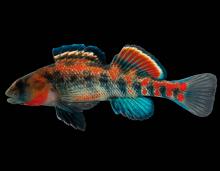
Species Types
Scientific Name
Etheostoma, Percina, Ammocrypta, and Crystallaria spp.
Description
Darters have been described as the hummingbirds of the fish world: colorful, small, and quick. Missouri has about 44 different types of darters. They are most diverse in the fast, clear, rocky streams of the Ozarks.
Media
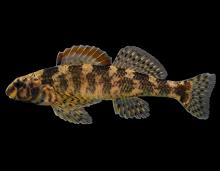
Species Types
Scientific Name
Etheostoma histrio
Description
In Missouri, the harlequin darter occurs only in our southeastern lowlands, in flowing streams and ditches with sandy bottoms. It is State Endangered because its small numbers and limited range make it vulnerable to extirpation.
Media
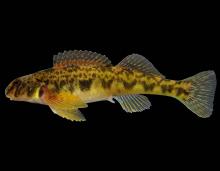
Species Types
Scientific Name
Etheostoma blennioides
Description
The greenside darter is one of our largest darters. It has olive to yellow sides and back with scattered red spots and vertical blotches often arranged in a V or W pattern. It is one of the most abundant and widespread darters in the Ozarks.
Media
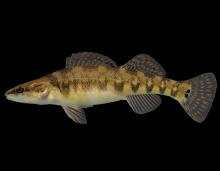
Species Types
Scientific Name
Etheostoma nianguae
Description
Two small black spots at the base of the tail fin distinguish the Niangua darter from all other darters in Missouri. Known from only a few tributaries of the Osage River, this dainty, colorful fish is a nationally threatened species.
Media

Species Types
Scientific Name
Umbra limi
Description
The central mudminnow is is the only mudminnow that occurs in our state, and it is rare, occurring only in a few marshy locations near the Mississippi River. Mudminnows are closely related to the pikes.
Media

Species Types
Scientific Name
Anguilla rostrata
Description
The American eel is considered an uncommon catch by Missouri sport anglers. This species is known to take natural baits and rarely takes artificial baits.
Media

Species Types
Scientific Name
Amia ocellicauda (formerly Amia calva)
Description
The eyetail bowfin is a stout-bodied, nearly cylindrical fish. It is most abundant in the Mississippi Lowlands, though it occurs along the entire length of the Mississippi River.
Media

Species Types
Scientific Name
Pomoxis annularis
Description
The white crappie, a popular panfish, has silver sides with 5 to 10 often faint vertical bars. The upper jaw reaches past the middle of the eye. It is more abundant and widespread than the black crappie.
Media
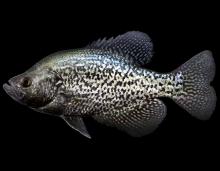
Species Types
Scientific Name
Pomoxis nigromaculatus
Description
The black crappie is a popular panfish. It is deep bodied and slab sided. The sides are silver with an irregular pattern of dark speckles. The upper jaw is long, reaching past the middle of the eye.
Media

Species Types
Scientific Name
Centrarchus macropterus
Description
The flier is found in Missouri's southeastern lowland swamps. It resembles crappie but has 10-13 dorsal spines. It's deep-bodied and saucer-shaped and generally olive-green to brassy in color.
See Also


Media

Species Types
Scientific Name
Amphiuma tridactylum
Description
The three-toed amphiuma is an eel-like, completely aquatic salamander. It has very small forelimbs and hind limbs, each with three tiny toes. In Missouri it’s found only in the Bootheel region.
Media

Species Types
Scientific Name
Siren intermedia nettingi
Description
The western lesser siren is an eel-like, aquatic salamander with external gills, small eyes, small forelimbs with four toes, and no hind limbs. In Missouri, it’s found mostly in the Bootheel and northward in counties near the Mississippi River.
About Fishes in Missouri
Missouri has more than 200 kinds of fish, more than are found in most neighboring states. Fishes live in water, breathe with gills, and have fins instead of legs. Most are covered with scales. Most fish in Missouri “look” like fish and could never be confused with anything else. True, lampreys and eels have snakelike bodies — but they also have fins and smooth, slimy skin, which snakes do not.





















